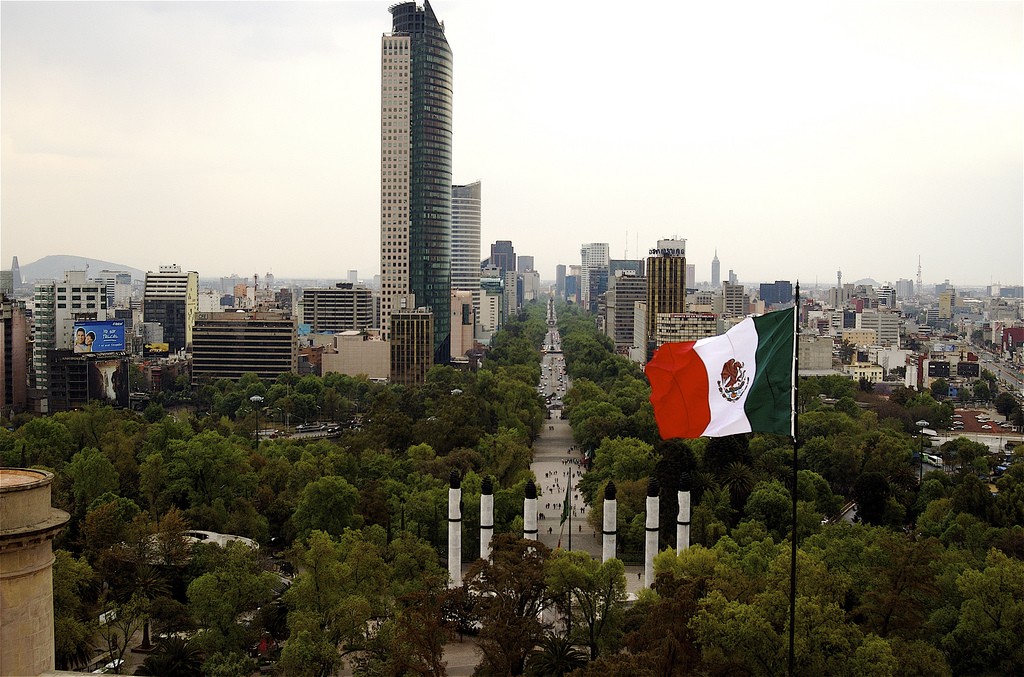Update on geothermal energy development in Mexico – government perspective
At the GEOLAC conference, representatives from various government institutions provide details on the regulatory scheme in Mexico and current challenges in the market, discussing permitting, energy auctions and risk mitigation.
Attending the Geothermal Conference for Latin America and the Caribbean (GEOLAC) in Mexico City, we will be providing short pieces like this to update on geothermal activities in the region.
In the government panel, representatives from the Ministry of Energy (SENER), the Energy Regulatory Commission (CRE), the National Center for Energy Control (CENACE) and the National Water Commission (CONAGUA). All of these entities are involved in the regulatory overview on geothermal development in Mexico.
Today Mexico has an installed “clean energy” capacity of 19,265 MW. So of overall installed power generation capacity, so about 28.3% comes from “clean energy” sources and geothermal represents about 1.3% of installed power generation capacity in the country (while around 1.96% of total power generated)
Geothermal energy is regulated by the Geothermal Energy Law from August 2014. It provides the requirements and procedures that govern the surveying, exploration and extraction of geothermal resources. The regulations in connection with the law govern the activities in order to generate electricity and other uses.
Geothermal activities are divided into:
- Inspection (reconnaissance activities, valid for 8 months): observing and exploring using geological studies to see if a determined area or territory may have geothermal resources to produce electrical energy.
- Exploration (valid for 3 years, renewable once for 3 years): activities contributing to geological, geophysical and geochemical knowledge of the geothermal area or territory, as well as any work executed at the surface and subsoil in order to verify the existence of geothermal resources. It also includes activities such as machinery assembly or perforation of exploratory wells.
- Exploitation (valid for 30 years and renewable for undefined time): those activities with a commercial purpose to obtain electrical energy or any other use by means of the subsoil heat though the perforation of wells or any other means, including all necessary works in order to construct, extract, produce or transform the geothermal resources.
In order to conduct these activities, permits are required that are provided by the Ministry of Energy.
Under the current scheme, permits will only be issued and concessions given for areas with geothermal resources to individuals or companies that are incorporated under Mexican law only.
With regards to the overall energy market, SENER – dictates energy policy, CRE, CNH , ASEA act as independent regulatory agencies, ISO’s are CENAGAS and CENACE …. and then are the operating companies, like Pemex, CFE and private players.
Geothermal energy is subject to a mixed rgulation carried out by different authorities in Mexico.
- SENER: exploration permit, exploitation concessions
- Conagua: drilling permit, exploitation of geothermal waters, concession
- CRE: generation permit, REC’s programme registration and management
CRE has issued 11 different geothermal generation permits, 5 of those are under the former legislatory regime and 6 under the new regime.
CRE has issued 4 permits for “self-supply” projects in Nayarit, Jalisco and Hidalgo with a combined capacity of 127 MW, of which one project with 52 MW is operating and 3 are under development.
Under a “small production”-permit one permit has been issued for a 30 MW project in Nayarit, which is under development.
Under the “generation”-permit, 6 permits have been issued, 5 of which to CFE with a combined capacity of 901 MW that are operating, and one for 25 MW which is under development.
In the discussions of the panel on the competitiveness of geothermal in the renewable energy auctions. In his comment, the representative of CRE sees the competitiveness of geothermal energy to be determined by the market. Overall in the auction, it seems like renewable energy are becoming competitive and their characteristics will determine how they will progress in the auctions. CRE does not see the need to favour geothermal through pricing or any specific measures.
On commenting on the energy auctions held and to be held, the representative from CENACE, the National Center for Energy Control, provides some insight on the auctions to be held and announced that this week, a new call for long-term contract auction will be issued. But geothermal can also participate in mid-term auctions.
The long-term auction are generally open to all technologies and the energy value is determined by location and time. The new auction will compensation chamber allows other agencies to participate, the idea is to attract new buyers with the goal to create higher demand under the scheme. Under this Clearing House scheme, the management of contracts are being facilitated.
A program established by Nacionales Financieros, a development banking institution in Mexico in cooperation with German MunichRE has been discussed, but so far not insurance has been issued yet. With low electricity prices currently sponsors are not committing and investing in early stage development. Another challenge is the current uncertainty in the market, with off-takers not signing long-term contracts, particularly with projects being in early stages. So there are now discussions under way to generate a market that would create demand, helps value projects correctly and can take advantage of the risk insurance scheme provided.
Explaining the scheme, it was described that the scheme takes into considerations wells with a capacity of 3 MW and overall projects with 20 MW and more, which could be secured under the risk insurance scheme.
In the discussions following the presentations, the view was shared that the auctions are not helpful under the publicly announced geothermal goals of the government. It though seems the regulatory body sees wind and solar projects currently as more attractive as they add more capacity than planned geothermal projects.
Note: This article was updated after some corrections suggested by Luis. C.A. Gutiérrez-Negrín, Morelia, Mexico


















